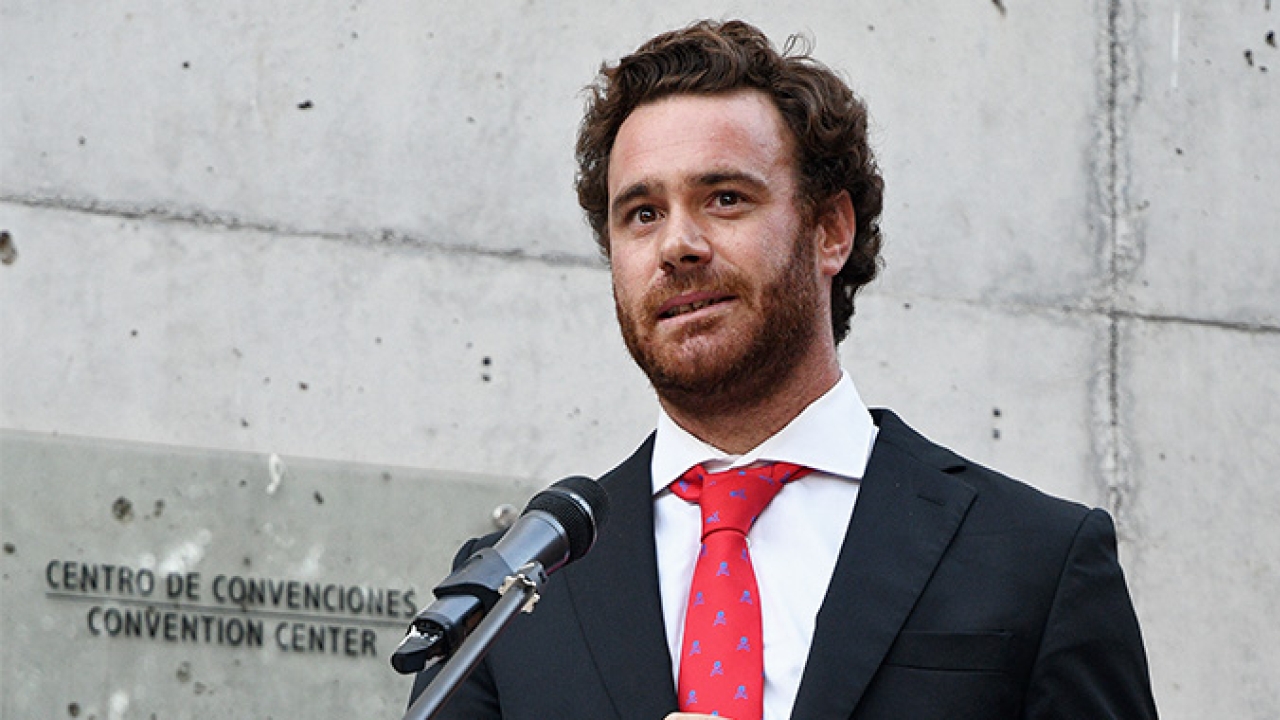Q&A : Javier Ibero

L&L: Your father founded the original label printing company Eadec in Spain. Tell us about the history of the business.
JI: My father, Ildefonso Ibero, was the founder of the company in 1994, along with three partners in a small town in northern Spain in Navarra, Cascante. The adventure began and little by little we were progressing in the market, which in Spain was already somewhat mature. But we created a niche for ourselves and managed to serve large retail firms in the country: canneries, automotive companies and vineyards from around our area and which had customers all over Spain.
L&L: Why did Eadec decide to open a factory in Chile?
JI: In 2002 the market in Spain was mature. Gaining market share meant lowering margins. So my father and his partners decided to expand the company’s horizons and open a facility in another country. At the time, Latin America and Eastern Europe were considered the most attractive options. During a tour organized by the government for Spanish business professionals in Chile, my father was able to make some contacts and begin the development of the project. Finally, in 2004 they opened the company and began the challenge of working in a new market 13,000km away.
L&L: Since the foundation of Eadec Chile, what has been the evolution of the company in terms of technology and markets?
JI: The operation in Chile was founded in 2004. Despite the distance, and the fact the project was complex and costly to get off the ground, by 2007 the company was already seeing the benefits. In 2012, I was offered the chance to enter the business and take on the challenge of the project in Chile. At the time, I had already finished a degree in industrial mechanical engineering and was working in the energy sector. I had also spent time at a food company. The project seemed interesting to me, so I decided to go to Chile and accept the challenge. The company in Chile had a great deal of investment and growth in the first five years – we doubled the size of the business and installed a whole new set of equipment. The first priority was to install a digital press to cater to the country’s short-run label market, then a finishing machine. We ended up renovating the whole factory floor.
L&L: What idiosyncrasies does the Chilean label market have that you had to adapt to?
JI: The way of working and understanding business is different in each country. In my experience, every business must be adapted when arriving in a new country, since the culture and the way of working are different. The first challenge is language. Although it is the same language, Spanish, there are many nuances that change the interpretation of communication, and that if they are not understood they can lead to misunderstandings. The market in Chile was very competitive, but little by little we adapted and found a niche where we could differentiate ourselves: in service and quality.
L&L: The Chilean label market is dominated by the wine industry, particularly for export. What specific challenges does wine label printing bring?
JI: The wine industry is a very demanding and complex sector due to various factors: the technical specifications from each country and the speed of delivery of orders are two fundamental factors. In addition, the number of SKUs handled by customers is huge and print runs are very short. This, coupled with the resources needed, makes for a complex end use sector. Lastly, wine labels have a wide variety of finishing options and added value, which forces you to invest in the very latest technology. This must then be complemented by good service.
L&L: Last year you opened another facility, this time in Peru. What was the motivation behind this move and how is business in Peru going?
JI: The Eadec Group project was to expand horizons and continue to grow as an international company. In Chile, growth was rapid. We then had to seek the challenge of continuing to grow. With the stability of the Chilean company, and the difficulty of continuing to grow with our margins (because the market is small and competitive), I decided to evaluate different countries. After extensive analysis, the chosen country was Peru. The decision was made because of the growth potential of that market and because we saw that we could add value in some products. The early steps are never easy, but with continuous work and effort, and the conviction that there were opportunities, we hope to grow rapidly in the country in the coming years.
L&L: What equipment do you have installed in your factories in Chile and Peru?
JI: We have a range of equipment in the factories, including HP Indigo digital printing technology and machines from Mark Andy and Omet. On the finishing side, we have systems from AB Graphic, Grafisk Maskinfabrik (GM) and Grafotronic.
L&L: At Label Summit Latin America 2020, you made a presentation on environmental sustainability. What measures has Eadec Chile taken to reduce its environmental impact?
JI: The first step is to know what your environmental impact is. This impact must then be controlled and for this we have an annual environmental program. The most important thing is to be able to control the key performance indicators (KPIs) in order to reduce them. One of the most important points was the decrease in kilos of contaminated rags. Another very relevant point was the performance improvement per kWh worked, which is partly related to the upgrading of the machinery. We were able to improve things by reducing our carbon footprint by 20 percent.
L&L: Also during the event, you received an award from Asimpres (the Chilean graphic arts association) for New Generation Businessman. Congratulations – this must have felt like vindication of your work in the country.
JI: Thank you. It was a great honor that the Chilean graphic arts association gave me this award and chose me among all the participants. For me it was a very nice way to finish my work and seven years of living in Chile, as I am currently based in Peru, dedicated to our business there. I think the award is recognition of the effort of our whole team – we all work towards the same goal and that is reflected in the results. Without this team, there would be no award.
L&L: On a personal level, how have you adapted to life in South America?
JI: The truth is that I love life in South America. I really enjoy getting to know new cultures and people; it can bring such rich experiences. When I was in Chile I took the opportunity to travel throughout the country, which is spectacular from north to south, and also through Easter Island. In addition to being able to get to know other Latin American countries, I think it is a unique opportunity, and I hope to continue taking advantage of it with my family.
L&L: Outside of work, what are your interests and hobbies?
JI: I like to spend time with my family and friends. I have a great fondness for gastronomy and wine. I also like to play sport, as this is how I release a lot of tension and it helps me to keep a clear mind. One of the sports that I most enjoy is surfing. I have been doing it for a long time and in both Chile and Peru access is easy. I also like cycling and racket sports. Generally speaking, I like to compete.
Stay up to date
Subscribe to the free Label News newsletter and receive the latest content every week. We'll never share your email address.


